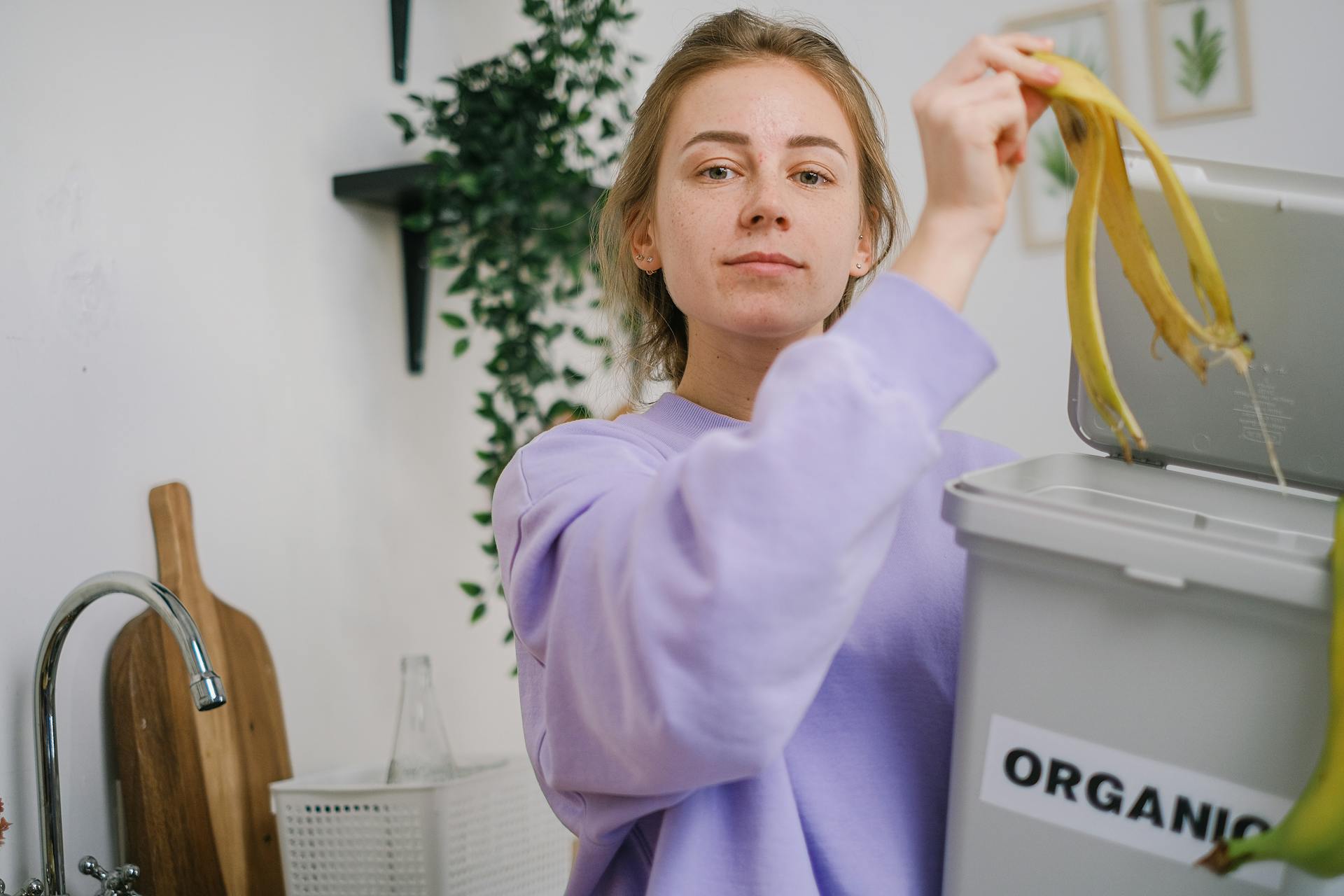
Compositing is the natural process of decomposition and recycling of organic matter such as leaves and food scraps. This process occurs when microorganisms break down the organic matter into simpler organic or inorganic materials. The end products of decomposition are called compost.
Compost bins are usually made of plastic, which is a durable and weather-resistant material. Plastic compost bins come in a variety of sizes and shapes, and they can be either open or closed.
Most plastic compost bins have a bottom and a lid. The bottom of the bin is perforated to allow aeration, and the lid helps to keep the bin closed and pests out. Some bins also have a tap at the bottom to allow excess water to drain out.
To use a plastic compost bin, simply fill it with your compostable materials. Be sure to mix in some brown materials (such as leaves) with your green materials (such as food scraps) to create a balance of carbon and nitrogen. This will help the composting process to occur more quickly.
Once the bin is full, close the lid and allow the composting process to occur. Depending on the temperature and the amount of material in the bin, the composting process can take anywhere from a few weeks to a few months.
Once the compost is ready, you can use it in your garden to improve the soil. Simply apply it to the soil around your plants and gently work it in.
Plastic compost bins are a great way to reduce your waste and improve your garden at the same time. If you have the space, we recommend having more than one bin so that you can continuously fill one while the other is finishing the composting process.
Worth a look: Place Compost Bin Sun
How do you set up a plastic compost bin?
In order to set up a plastic compost bin, you will need the following supplies:
-One plastic bin with a lid -One compostable bag -Kitchen scraps -Moisture (water or rain)
Step One: Choose a bin that is the right size for your needs. The bin should be big enough to hold all of your kitchen scraps, but not so big that it becomes unmanageable.
Step Two: Place the compostable bag inside the bin.
Step Three: Fill the bin with kitchen scraps. Be sure to include a mix of green and brown materials.
Step Four: Add moisture to the bin. This can be in the form of water or rain.
Step Five: Close the lid of the bin and allow the compost to break down.
Step Six: Empty the contents of the bin into your compost pile or garden.
See what others are reading: How Much Compost Do I Need?
What are the best materials to compost in a plastic bin?
There is no definitive answer to the question of what are the best materials to compost in a plastic bin. However, there are certain materials that are generally considered to be better suited for composting in a plastic bin than others. These include:
- Kitchen scraps: This is perhaps the most obvious material to compost in a plastic bin. Kitchen scraps are highly biodegradable and will break down quickly in the presence of air and moisture.
- Grass clippings: Grass clippings are also highly biodegradable and will break down quickly in a plastic bin.
- Leaves: Leaves are another great material to compost in a plastic bin. They are high in carbon and will help to balance out the compost pile.
- Manure: Manure is an excellent source of nutrients for plants and will help to speed up the composting process.
In general, it is best to avoid composting materials that are high in nitrogen, such as meat scraps or green plant matter. These materials can add an unpleasant smell to the compost pile and can attract pests.
Consider reading: Plastic Surgery
How often should you turn the compost in a plastic bin?
Most backyard compost bins are turned periodically to mix the contents and speed up the composting process. The turning frequency can vary based on the type of compost bin, the size of the bin, the materials being composted, the temperature, and the amount of moisture in the bin.
Many bins have a turning bar or crank on the lid that makes it easy to mix the contents. For bins without a turning bar, you will need to remove the lid and use a pitchfork or other long-handled tool to stir the compost. The material at the bottom of the bin should be moved to the top, and the material at the top should be moved to the bottom.
The frequency of turning will vary based on the type of compost bin. In general, bins made of plastic or other non-porous materials will need to be turned more frequently than bins made of wood or other porous materials. This is because compost bins made of non-porous materials tend to retain more moisture, which can slow down the composting process.
The size of the bin can also affect the turning frequency. Smaller bins will need to be turned more frequently than larger bins, since the material will break down more quickly in a smaller bin.
The materials being composted can also affect the turning frequency. Kitchen scraps and other fresh materials will break down more quickly than dry leaves and other yard waste. As a general rule, fresh materials should be added to the compost bin every week, and the bin should be turned every two weeks. Dry leaves and other yard waste can be added to the bin as needed, and the bin can be turned every month or two.
The temperature can also affect the turning frequency. Composting is a biological process that occurs more quickly at warmer temperatures. In the summer, the compost bin may need to be turned once a week or more to keep the material from getting too hot. In the winter, the bin can be turned less frequently, since the colder temperatures will slow down the composting process.
Finally, the amount of moisture in the bin can affect the turning frequency. If the bin is too wet, the material will break down more slowly. If the bin is too dry, the material will break down more quickly but may become powdery and difficult to turn. The ideal moisture content for composting is about 60%. If the bin is too wet, add some dry leaves or other dry material. If the
What are the signs that your compost is ready to use?
Compost is a key ingredient in successful organic gardening. It is essential for water retention, aeration, and drainage, as well as providing a nutrient-rich environment for plants togrow.
There are several signs that your compost is ready to use:
The compost should be a dark brown or black color, and have a crumbly, earthy smell.
When you squeeze a handful of compost, it should feel moist, but not wet or soggy.
The compost should be teeming with earthworms and other beneficial microorganisms.
When you plant in compost, you should see an immediate improvement in plant growth and health.
If you have any doubt about whether your compost is ready to use, it is always best to err on the side of caution and let it continue to compost for a bit longer. Better to have compost that is a bit too raw, than to risk damaging your plants with compost that is not yet ready.
How do you harvest compost from a plastic bin?
You can harvest compost from a plastic bin by following these simple steps:
1. Fill your bin with a mix of green and brown materials.
Green materials include things like fruit and vegetable scraps, coffee grounds, and grass clippings. Brown materials include things like dead leaves, twigs, and wood chips.
2. Mix the materials together well.
3. Wait for the compost to decompose.
This can take anywhere from a few weeks to a few months.
4. Once the compost is ready, you can harvest it by opening up the bin and scooping out the finished compost.
5. Use the compost in your garden or wherever else you see fit!
Compost is an excellent way to give your plants a nutrient boost and improve the overall health of your garden. By following these simple steps, you can easily harvest compost from a plastic bin.
What should you do if your compost starts to smell bad?
If your compost starts to smell bad, you should fork it over to aerate it and add some lime. If the bad smell persists, you may need to add more lime, or even change the location of your compost pile.
For your interest: Add Worms
What are some common problems with plastic compost bins?
There are many problems that can occur when using plastic compost bins. First, the plastic can break down over time and release toxins into the compost. This can contaminate the compost and make it unsafe to use. Second, plastic compost bins can attract rodents and other pests. If the bin is not properly sealed, the pests can get into the bin and contaminate the compost. Third, plastic compost bins can get very hot in the sun and cause the compost to overheat. This can kill the beneficial bacteria in the compost and make it less effective. Finally, plastic compost bins can be very difficult to clean and can often harbor mold and mildew. If not cleaned properly, the mold and mildew can contaminate the compost and make it unsafe to use.
Where can you buy a plastic compost bin?
A plastic compost bin is an excellent way to start composting. It is important to have a place to store your compostable materials until they are ready to be added to your compost pile or bin. There are many places to buy a plastic compost bin. hardware stores, garden supply stores, and online retailers all sell compost bins.
The size of the bin you need will depend on the amount of compostable material you generate. A smaller bin can be used if you only have a small amount of space, or if you compost only a few items. The size of the average household compost bin is between 18 and 24 inches in diameter. If you have a larger family, or generate a lot of compostable material, you may need a bin that is 36 inches in diameter.
Most plastic compost bins have a lid to keep out unwanted critters. The lid should have ventilation holes to allow air to circulate. The bin should also have a handle or handles to make it easier to move when it is full.
When you are ready to start composting, there are a few things you will need in addition to your bin. You will need something to cover the bottom of the bin, to keep the compostables from coming into contact with the ground. This can be something as simple as a layer of newspaper or a piece of cardboard. You will also need something to aerate the compost, such as a pitchfork or a garden hoe.
Once you have assembled all of the necessary materials, you are ready to start composting! Add a layer of compostable material to the bottom of the bin, and then cover it with a layer of covering material. Repeat this process, alternating layers of compostables and coverings, until the bin is full. Once the bin is full, put the lid on and allow the compost to break down.
After about four weeks, the compost should be ready to use. When you are ready to use it, simply remove the lid and aerate the compost with a pitchfork. Then, use it as you would any other type of compost.
Curious to learn more? Check out: Tms Start Working
Frequently Asked Questions
How do compost bins work?
Compost bins work by aerating the organic matter and creating an environment where bacteria can break down the material. The process of composting creates heat, which speeds up the decomposition process.
Can you put compost in a plastic bin?
Yes, if you drill plenty of holes in the bin.
How do you make compost decompose faster?
Drill small holes in a plastic bin to allow air circulation and help decompose compost faster.
Do I need a second bin for composting?
You don't need a second bin for composting, but it is helpful to have one. The second bin helps to catch the liquid that leaches out of the first bin. This nutrient-filled liquid can be used as a fertilizer, called "compost tea ", in the garden.
How to use a compost bin effectively?
You can use a compost bin effectively by following these steps: build a pile of alternate layers of carbon sources (like dried leaves) and nitrogen-rich matter (like fruit peels), keep the pile damp, and turn the pile regularly.
Sources
- https://helpmecompost.com/home-composting/methods/how-often-to-turn-a-compost-tumbler/
- https://www.compostguide.com/compost-materials/
- https://helpmecompost.com/compost/materials/compost-materials-chart/
- https://www.youtube.com/watch
- https://mybackyardlife.com/how-often-to-turn-compost/
- https://revivegarden.com/how-to-turn-compost-in-a-plastic-bin/
- https://dreamscapesgardening.com/how-does-a-compost-bin-work/
- https://www.tekplas.co.uk/product/plastic-compost-bin/
- https://www.greenspherelawn.com/landscaping-tips/diy-composting-how-to-make-a-plastic-compost-bin-for-less-than-20/
- https://www.smallspacegardeningbasics.com/how-do-kitchen-compost-bins-work/
- https://gardeningleave.org/the-best-way-to-compost-your-packaging/
- https://www.reddit.com/r/composting/comments/zblhr6/plastic_bin_outdoor_compost_pt_2/
- https://www.youtube.com/watch
- https://www.smallspacegardeningbasics.com/how-to-use-a-two-bin-compost-system/
- https://www.smallspacegardeningbasics.com/how-often-should-i-turn-my-compost/
Featured Images: pexels.com


